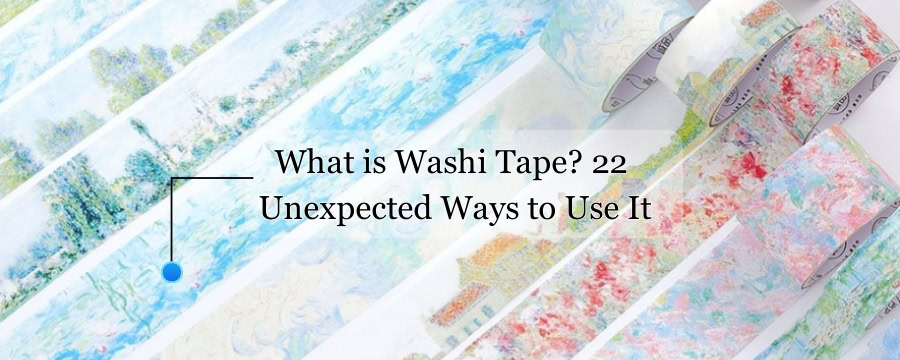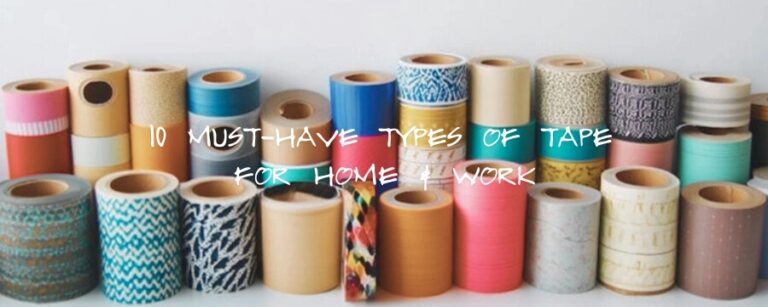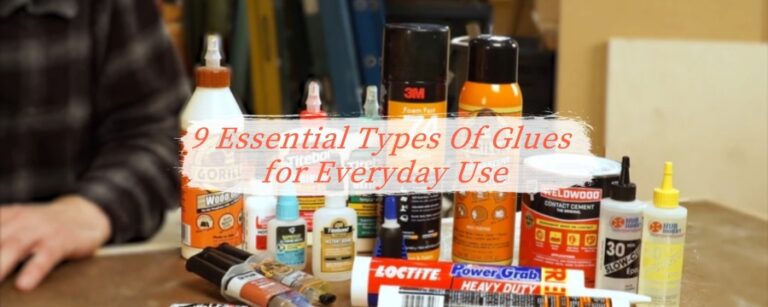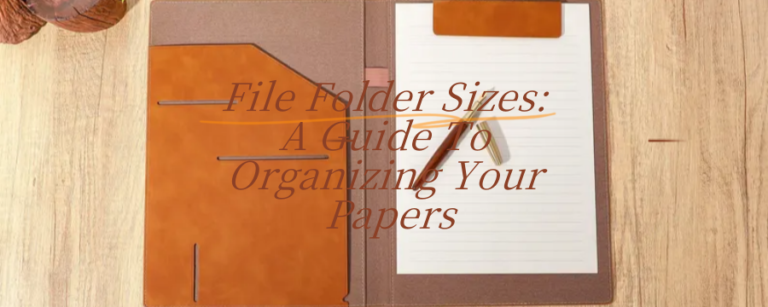Introduction
What is washi tape? This versatile Japanese paper tape has taken the crafting world by storm with its delicate texture, easy-tear design, and endless decorative possibilities.
Whether you’re a journaling enthusiast, a home decor lover, or a DIY crafter, this colorful tape offers endless creativity.
Here are 22 unexpected ways to use washi tape! Let’s explore its charm together!
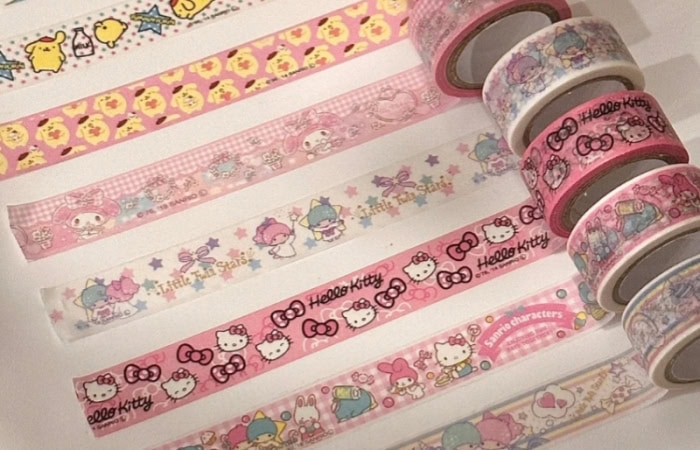
What is washi tape?
Many people may be curious about what is washi tape. Washi tape is a decorative adhesive tape made from traditional Japanese paper, known as “washi.” Unlike conventional plastic-based tapes, washi tape is crafted from renewable natural fibers such as mulberry bark, mitsumata shrub, hemp, rice, or bamboo.
Originally developed in Japan in the early 2000s, washi tape quickly gained popularity worldwide for its charm, versatility, and ease of use. It sticks gently but securely to most surfaces, can be torn by hand, written on, and removed without leaving any sticky residue behind.
Best of all, it comes in an endless variety of colors, prints, widths, and finishes, making it a favorite tool for artists, crafters, students, designers, and DIY enthusiasts alike.
Whether you’re decorating a notebook, sealing a gift, adding flair to a journal, or brightening up a wall, washi tape makes creativity easy and mess-free. It’s fun, flexible, and endlessly useful, and once you start using it, you’ll probably find more ways to use it than you ever expected.
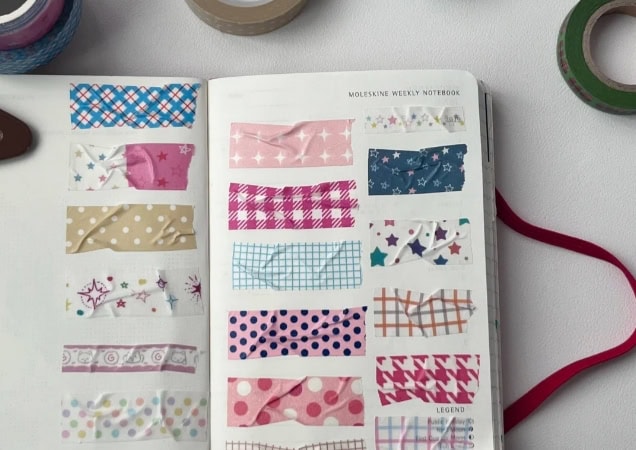
Why People Love Washi Tape?
There’s just something about washi tape that makes people fall in love with it. Maybe it’s the colors, maybe it’s the ease of use, or maybe it’s the way a simple strip of tape can turn anything into something personal and beautiful. Whatever the reason, once you try it, it’s hard not to get hooked.
🎨 Endless Designs
From bold patterns and pastel florals to metallic foils and minimalist stripes, washi tape comes in every style imaginable.
✂️ No Scissors Needed
Washi tape tears cleanly by hand. It’s perfect for quick projects or spontaneous creativity.
🧲 Sticks
The adhesive is strong enough to stay in place, but gentle enough to remove without damaging surfaces. You can reposition it or peel it off without leaving any residue.
✍️ You Can Write On It
Because of its papery texture, you can easily label it with pens, pencils, or markers. It’s great for notes, tags, or adding captions to planners and journals.
🌱 Eco-Friendly
Most washi tape is made from natural, renewable fibers, making it a more environmentally friendly option compared to plastic tapes.
🎁 Functional + Fun
It’s the perfect mix of useful and decorative. Whether you’re organizing your desk, wrapping a gift, or decorating your walls, washi tape does the job, and makes it look good too.
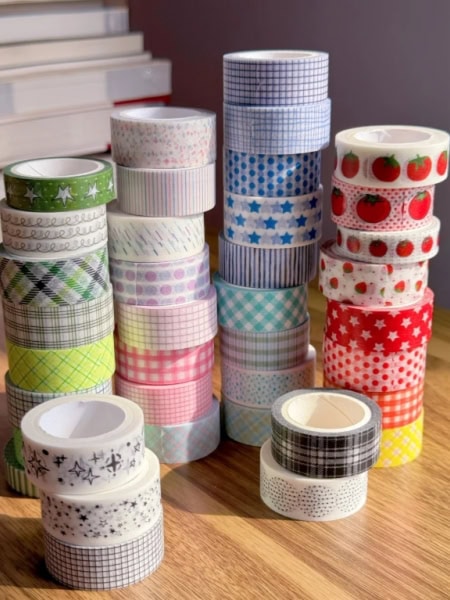
22 Unexpected Ways to Use Washi Tape
After learning what is washi tape, many people must be curious about what unexpected uses washi tape has. Washi tape is a versatile tool loved by notebook users, stationery lovers, and craft enthusiasts alike. Its lightweight, thin material is easy to tear by hand, leaves no sticky residue, and comes in a wide variety of beautiful patterns.
Here are 22 creative ways to use washi tape, covering both practical and decorative ideas.
1. Decorate your notebook
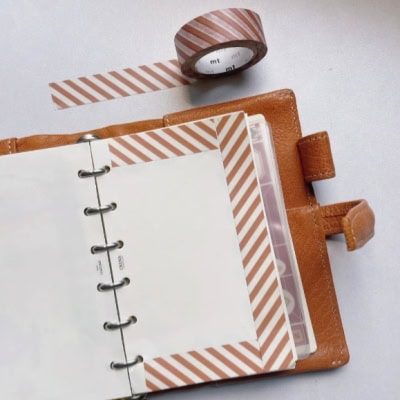
Decorating notebooks with washi tape is simple and fresh. You can directly stick a circle along the edge of the page to make a border, or cut a small piece to stick around the title to highlight the key points, or cut it into different shapes and stick it next to the text as an embellishment.
Washi tape has moderate stickiness. If you stick it wrong or want to change the style, you can tear it off without leaving marks on the paper. It is easy for novices to use. With these simple combinations, ordinary notebooks can become more personal.
2. Customize phone or laptop cases

Customizing your phone or laptop case with washi tape is simple and flexible. First, clean the surface of the case, and then choose to cover a large area with the same series of tape or embellish it locally. For example, stick a small pattern in the corner, or stick a thin tape along the edge to outline the line.
The phone case can also be collaged with different patterns, or cut into small shapes and stuck around the camera. The washi tape has moderate stickiness, and it will not leave any residual adhesive when you tear it off you replace it, making it easy to create a unique style.
3. Create removable bookmarks

It is very convenient to use Japanese paper tape to make a removable bookmark: cut a piece of tape of suitable length, fold it in half so that part of it extends beyond the edge of the page, and stick it on the page you want to mark.
You can choose a patterned style, which is easy to identify and beautiful, and has moderate stickiness. It will not damage the page when you tear it off when moving, and it is also convenient to reuse, which is suitable for marking different reading progress or key content.
4. Pin photos
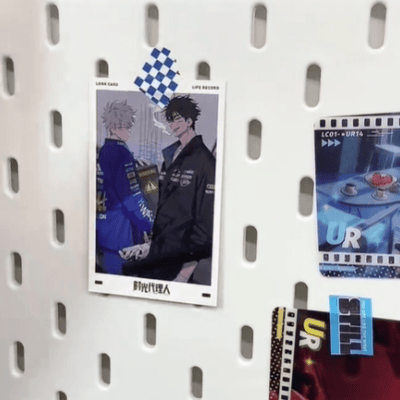
Use Japanese paper tape to fix photos, which can not only fit them firmly but also avoid damaging the pictures. Simply cut a small piece of tape and stick it on the corners or back of the photos, and then stick it on the album, notebook, wall, etc.
When you adjust the position later, you can tear it off gently without leaving glue marks on the photos or tearing the paper. It is suitable for scenes where you need to move or change the photos frequently. At the same time, the pattern of the tape can also add a little decorative feeling to the photos.
5. Customize your stylus
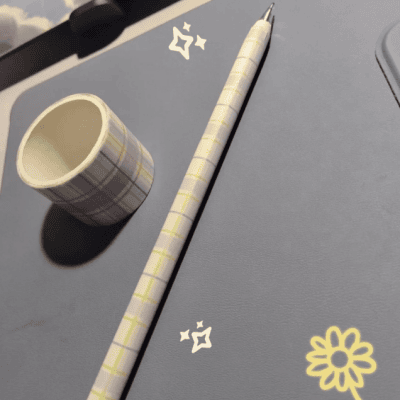
Use washi tape to customize the stylus skin. It is easy to operate and can highlight your style. First, clean the surface of the pen body, cut the tape of appropriate length according to the shape of the pen, and directly wrap it around and paste it. You can also cut some small pieces of the pattern and paste them in a staggered manner.
The tape is light and thin, fits the pen body, and is not easy to curl up, and can also protect the pen body from minor scratches. When you want to change the style, just tear it off gently, and easily make an ordinary stylus unique.
6. Labeling mobile phone chargers
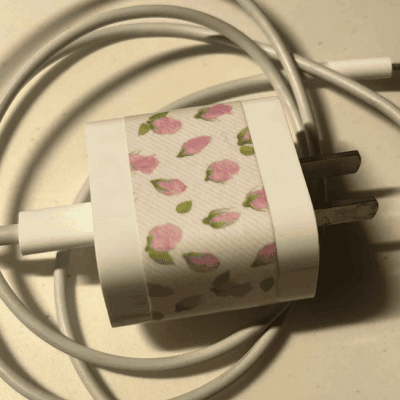
Using Japanese paper tape to label mobile phone chargers is simple and practical. Cut a small piece of tape and stick it directly on the charger plug or cable.
You can use different colors and patterns of tape to distinguish chargers for different devices, or write the name or model on the tape with a marker, which is convenient and neat.
7. Photo wall border

Using washi tape to make a photo wall frame is simple and effective. Depending on the size of the photo, you can stick a circle of tape along the edge of the photo on the wall to directly serve as a frame; you can also choose a tape that is larger than the photo to leave a uniform “margin” to create a three-dimensional layered effect.
Tapes with different patterns (such as stripes, plaids, and florals) can also echo the style of the photo, easily giving the photo wall a more integrated design feel and making it easy to adjust.
8. Light Switch Decoration
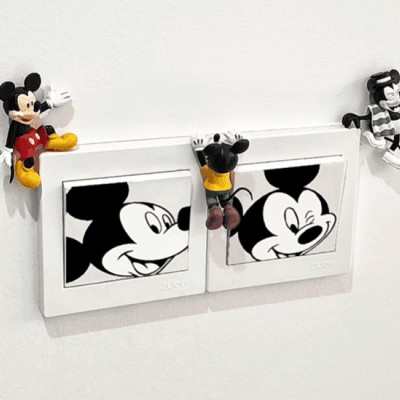
Applying washi tape to a switch can instantly transform a dull wall feature. Choose a favorite tape and apply a narrow band of tape along the edge of the switch, just enough to outline the switch without obstructing the buttons.
Alternatively, cut a band of tape roughly the same size as the switch panel and apply it completely across the entire surface, completely covering the design. This makes the switch an easy addition to your wall, adding a touch of joy to your everyday touch.
9. DIY Decorative Painting

DIY washi tape decorative art is a simple way to create a unique work of art. Prepare a cardboard or canvas as a base and choose tape with coordinating colors and patterns, such as solid colors like Morandi, textured stripes, or vintage illustrations.
Cut the tape into different shapes and create abstract designs on the base. Alternatively, use the tape as a base and layer cutouts of cardboard, fabric, and other elements to create a richer, more dimensional image.
10. Personalize Glass Water Cup
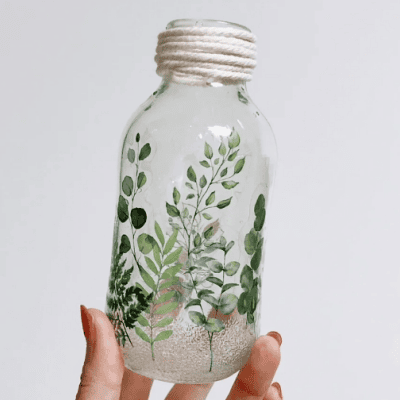
Choose a few waterproof tapes, such as matte solid colors or transparent patterns. Cut small designs like leaves or letters and apply them to the cup. For a more creative look, apply a circle of tape to the bottom of the cup for both slip resistance and added detail.
Washi tape adheres snugly to glass, allowing the design to appear vibrant when light shines through. Keeping it away from the water-sensitive area of the cup’s rim will protect it from moisture.
11. Add borders to mirrors
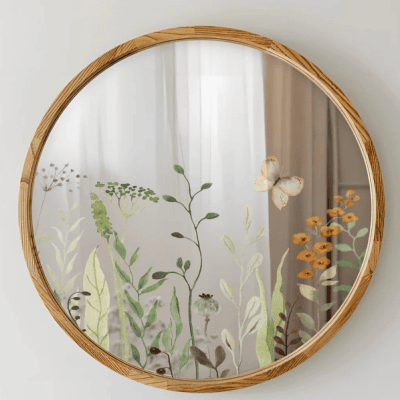
Decorating a mirror with washi tape can instantly give an ordinary mirror a sense of design. Apply the tape along the edge of the mirror. You can apply a single layer of tape to create simple lines, or you can overlap and overlap to create a layered effect.
For a more dynamic look, you can cut some tape into pieces and create patterns such as small flowers and stars in the corners. Easily make the mirror a decorative highlight in the space, and you can get a little surprise every time you look in the mirror.
12. Seal envelopes with a decorative strip

Sealing envelopes with washi tape is both practical and unique: tear off a piece of tape and stick it firmly along the envelope seal. Choose a patterned one, such as pinstripes or small florals, which can directly replace ordinary seals.
You can also stick decorations on the edge of the seal or cut short strips to create mini patterns. Different styles of tape can echo the atmosphere of the letter, and it is easy to change the style, making the envelope exquisite.
13. Decorating the headphone case

Using washi tape to decorate the headphone case can easily give small items a unique “outerwear”. Choose a few tapes you like, cut a piece of tape of the right size and stick it all over the case, then trim the edges with a knife; if you want a more design sense, you can also cut different tapes into small patterns and paste them together.
Washi tape is thin and fits well, and will not make the case thick and heavy, making the headphone case say goodbye to monotony and become a personalized small decoration that you can carry with you.
14. Make a Cake Flag
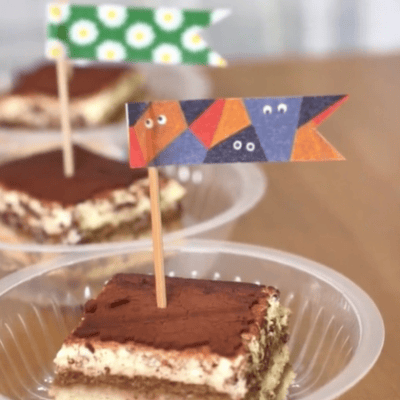
Using washi tape to create a cake flag is a simple way to add a touch of flair to your dessert. Place a toothpick in the middle of the tape and fold it in half along the center line, allowing both sides to adhere tightly to the toothpick.
Use scissors to trim the flag into a rectangular or triangular shape, or create wavy or jagged edges for an instant touch of playfulness. Place the finished flag on top of the cake to easily enhance the dessert’s formality.
15. Personalized bookmarks

Making personalized bookmarks with washi tape is simple yet creative. Cut a piece of cardboard to bookmark size, then select a few favorite tapes. Apply thin strips of tape around the edges to create a border, and a solid layer of tape in the center to create a base.
Then, cut out small designs to create a collage, or simply create symbols. The resulting bookmark is lightweight and won’t damage the pages, while the tape’s texture exudes a delicate feel, making every page a unique experience.
16. Scrapbooking embellishments
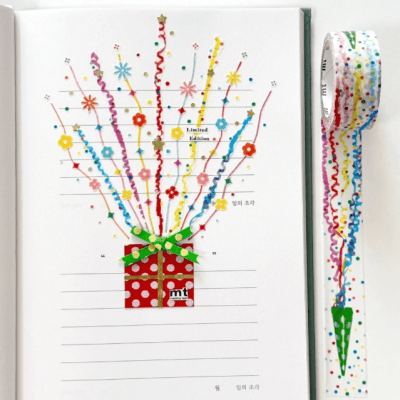
Use washi tape to collage patterns on the notebook. Pick a few tapes with matching patterns and colors, cut them into strips, squares, or irregular shapes, and combine them freely in the blank space. For example, use green tape to collage the outline of leaves, and yellow tape to cut small flowers for embellishment.
You can also overlap and paste to make the colors light and dark. Whether you are recording your daily life or taking inspiration notes, it will be particularly atmospheric.
17. Custom greeting cards

On a blank card cover, cut several pieces of tape with different patterns to create a border or geometric design, leaving space in the center for your greeting. You can also decorate the inside with a narrow strip of tape along the edge, or cut small designs (stars, hearts) to embellish the text.
Choose a style for each occasion—use lively cartoon tape for birthdays, or a themed pattern for holidays—to easily create a card that’s both stylish and thoughtful.
18. Loose-leaf paper repair
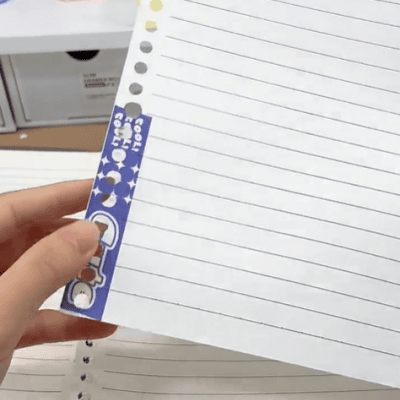
Repairing loose-leaf paper with washi tape is both firm and not obtrusive. When the holes on the edge of the loose-leaf paper are torn or the corners are worn, cut a small piece of Japanese paper tape, gently stick it on the damaged area, and press it flat.
If the holes are torn more severely, you can stick a layer on the front and back of the paper to enhance the firmness. After repair, it can extend the service life. The operation is simple and practical.
19. Fixed puzzle
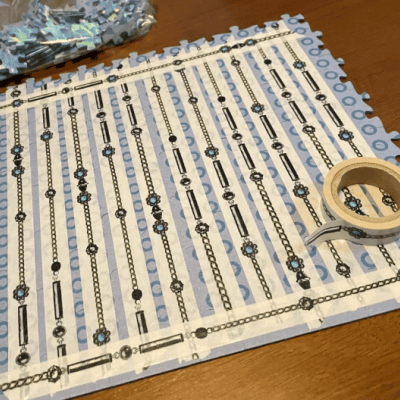
Applying washi tape to the back of the puzzle is a simple and effective way to secure it. Once the puzzle is complete, carefully move it to a flat surface. Choose a suitable width of washi tape and apply it evenly along the edges of the puzzle, either horizontally or vertically. Make sure to cover the seams between the pieces.
Apply multiple strips to create a cross-shaped grid pattern for added security. Washi tape will not damage the surface of the puzzle, and once secured, it makes it easy to lift the puzzle for mounting or storage.
20. Decorate your Kindle

Decorating your Kindle with washi tape is an easy way to create your style without damaging the device: first, clean the Kindle from dust, choose a pattern according to your preference, cut the tape to the right length, start from the edg,e and apply it slowly, gently smoothing it with your fingers or a scraper to avoid bubbles.
You can only apply it to the back, use different tapes to create contrasting stripes, geometric patterns, or apply a thin tape around the edge to make a border.
21. Calendar Mark

It is very convenient to use Washi Tape to mark calendars: stick a small piece of tape on the calendar date, and different colors or patterns can correspond to different items. For example, red marks important schedules, and floral patterns mark anniversaries.
You can also cut a short strip and stick it above the date to highlight the to-do items. When changing the mark or updating the schedule, just tear it off and stick it again, which will not damage the calendar page and make the schedule clear at a glance.
22. Tape Collage
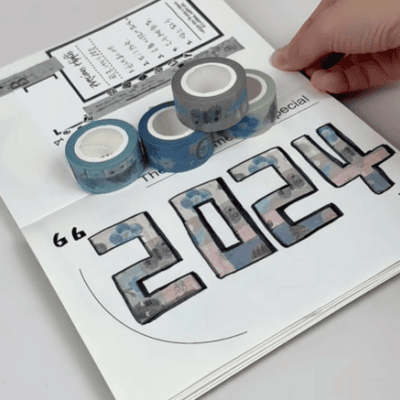
It is very flexible to use Washi Tape to make collage: choose tapes with different patterns and colors, cut them into the required shapes (squares, strips, curves, etc.), and stick them directly on paper, wood boards, and other carriers.
You can create abstract patterns, scene pictures, or randomly superimpose them to create a sense of hierarchy. If you stick them wrong, you can tear them off and stick them again, which is suitable for quickly creating decorative paintings or notebook pages.
Tips for Using Washi Tape
Whether you’re decorating a journal, personalizing a gift, or adding charm to your home, washi tape offers endless creative potential. Here are some simple yet effective tips to help you make the most of this versatile craft tool.
Plan your design first: Lay out your ideas before sticking the tape down.
Prep Your Surface: Clean and dry the area first for better adhesion. Smooth surfaces work best.
Layer with Style: Combine different patterns by overlapping tapes to create unique designs.
Tear, Don’t Cut: Use your hands for a soft, frayed edge that adds rustic charm.
Reposition with Ease: Gently lift and restick if needed—washi tape is forgiving!
Storage: Store in a cool, dry place to keep the adhesive fresh. Or keep the original plastic film to prevent dust.
Mix Textures: Try metallic, matte, and glitter tapes together for dimension.
Reuse when possible: Washi tape is often removable and reusable.
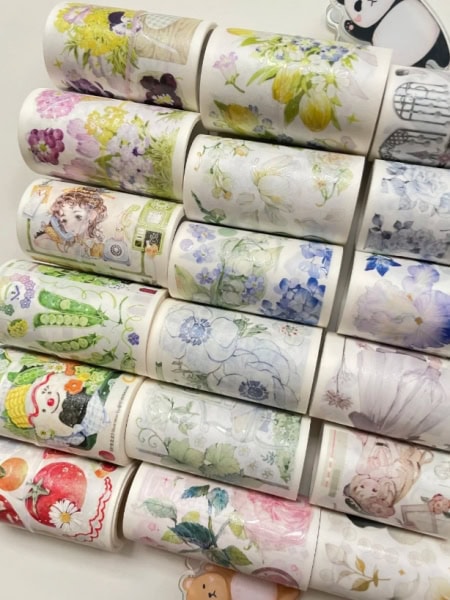
FAQ
What types of tape are there besides washi?
While washi tapes are loved for their soft, paper-like texture and artistic feel, there are many other types of tapes to explore, including OPP tape, masking tape, and painter’s tape, etc. Each with different looks, feels, and uses.
Want to know more tape types? Read our full guide to “10 Must-Have Types of Tape for Home & Work “
Is washi tape removable?
Yes, washi tape is removable. It peels off easily and usually doesn’t leave any sticky residue or damage the surface.
Is washi tape waterproof?
Washi tape is not waterproof. It’s made from natural fibers like bamboo or rice paper, so it can absorb water and may peel or lose stickiness when wet.
What is washi tape used for in diamond painting?
In diamond painting, washi tape is used to:
1. Section off areas of the canvas to work on bit by bit.
2. Keep the edges neat by covering the sticky border outside the design.
3. Prevent dust and dirt from sticking to unused parts of the adhesive canvas.
4. Add decoration to the canvas or frame.
It’s a handy tool for keeping things clean, organized, and fun!
Where I keep my my washi tape?
You can keep your washi tape in several convenient and organized ways:
🧺 Storage boxes or drawers
🎡 Washi tape dispenser or holder
📦 Clear plastic bins so you can see designs easily
🛍️ Hanging organizers or pegboards
📚 Empty mason jars or spice racks
💼 Craft carts with compartments
Just choose a method that fits your space and how often you use it!
Washi tape vs masking tape : which one should you use?
| Feature | Washi Tape | Masking Tape |
| Material | Decorative Japanese paper | Crepe paper |
| Adhesive | Light, repositionable | Stronger can leave residue |
| Design | Comes in many colors & patterns | Usually plain (beige or white) |
| Use | Crafts, journaling, decor | Painting, labeling, and general purpose |
| Removability | Easy to remove, no damage | May tear or leave sticky marks |
Is washi tape sticky?
Yes, washi tape is sticky, but it’s lightly adhesive; it sticks well to surfaces but can be removed easily without leaving residue. It’s not super strong, so it’s not suitable for sealing packages or holding heavy objects.
Conclusion
Washi tape proves simple things can spark big creativity. These 22 uses show it’s both handy and playful. It’s more than tape; it’s a way to put your mark on things, mixing usefulness with fun. So when you think, “What is washi tape?” Just know: it’s the easy way to turn boring into awesome, one strip at a time.

